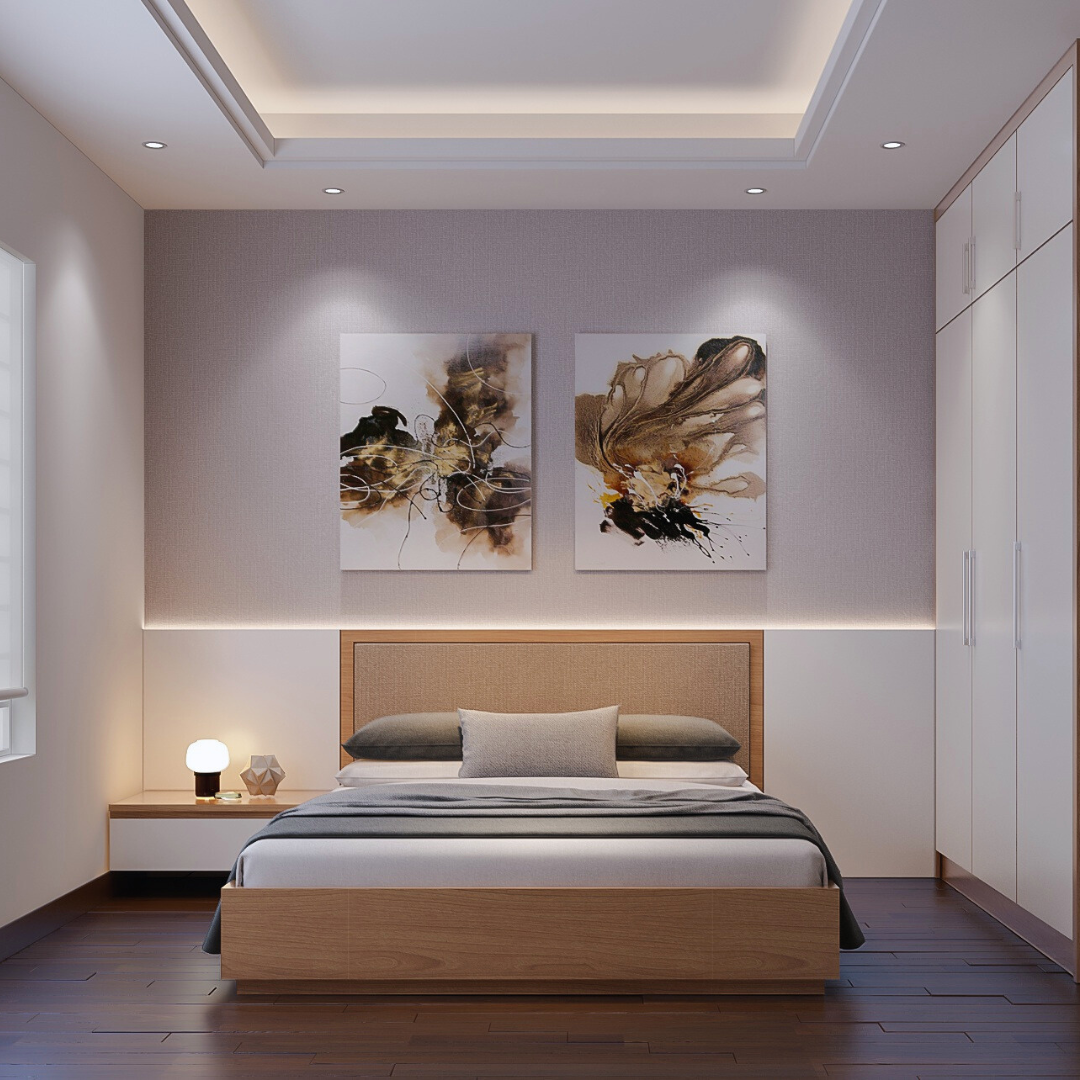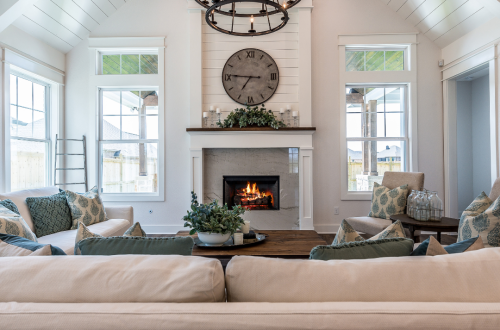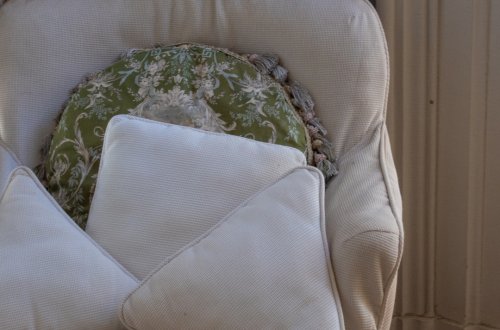Incorporating art into living spaces can significantly enhance the atmosphere of a room. Art has the power to transform a room by adding character, evoking emotions, and defining the overall aesthetic of the home decor. Whether it’s a bold painting, a delicate sculpture, or a well-placed photograph, art pieces can turn a mundane space into a vibrant, personal sanctuary.
The right artwork can create a focal point, drawing attention and sparking conversations among guests. It can also influence the mood of a space; bright, lively pieces may energise a room while softer, muted works can promote relaxation. Additionally, art allows individuals to express their unique tastes and styles, making their homes truly their own.
Integrating art doesn’t require a complete redesign; even small changes can have a substantial impact. By thoughtfully selecting and displaying art, anyone can elevate their living space and craft a more inviting and expressive home environment.
The Impact of Art on Room Atmosphere
Art significantly influences the mood and character of a space. By serving as a focal point and reflecting personal tastes, it can transform the perception of any room.
Creating a Focal Point with Art
Artwork can draw the eye and create a focal point within a room. A large piece, such as a dramatic painting or an intricate sculpture, can anchor the space. This focal point helps to guide the viewer’s attention, making the room feel more cohesive.
Strategically positioning artwork is crucial. For instance, placing it above a fireplace or in a prominent area can enhance its impact. This placement can elevate the room’s aesthetic, making it feel more inviting and connected.
Selecting Art to Reflect Personality
Choosing artwork that resonates with an individual’s personality fosters an emotional connection. Personal preferences, interests, and experiences can be expressed through selected pieces. Whether abstract, contemporary, or classic, the right art can speak volumes about the inhabitant’s character.
It is essential to consider the colour scheme and style of the room when selecting art. Art that complements existing decor ensures harmony and reinforces the desired type of atmosphere, whether relaxed, vibrant, or sophisticated.
Atmosphere Enhancement through Artwork
Artwork contributes to the overall atmosphere of a room by influencing mood. Warm colours can create a feeling of comfort and joy, while cooler tones might evoke calmness or serenity.
Adding texture through mixed media or three-dimensional art can further enrich the space. This variety not only engages the senses but also adds depth, making the environment more dynamic.
Incorporating art into a room enhances the emotional experience. It reflects individuality and can transform a mundane area into a personal oasis, impacting how one feels while spending time there.
Artwork Selection and Placement Strategies
Careful selection and strategic placement of artwork significantly enhance a room’s aesthetic and atmosphere. Incorporating art effectively involves considerations like integration with design themes and choosing the right colours.
Integrating Art with Interior Design
Art should harmonise with the room’s overall design theme. For example, a modern space may benefit from abstract pieces, while traditional settings might suit classic landscapes or portraits.
It’s crucial to consider the furniture and layout when selecting artwork. Large pieces can anchor a space, while smaller artworks may work well in clusters.
Matching the style of the artwork with the room’s architecture can create a cohesive look. Modern artwork in a minimalist space or a vintage print in a rustic room enhances the interior aesthetic.
Choosing Art that Complements Colour Palettes
Selecting art that complements the room’s colour palette is vital. Neutral tones can allow vibrant pieces to stand out, while a bold colour scheme may require more subtle art choices.
It can be effective to choose artwork that picks up hues from the furniture or curtains. This creates a sense of continuity.
She can also consider the mood created by the colours in the art. Warm colours energise a space, while cool tones provide a calming effect, influencing the room’s atmosphere.
Strategic Placement for Maximum Impact
The placement of artwork plays a key role in its visual impact. Art should typically be hung at eye level to ensure it is engaging.
In larger rooms, group artworks in a gallery style, creating a focal point. Alternatively, place a single large piece to draw attention.
Consider the viewing distance. Larger works should be placed further away to allow for appreciation, while smaller pieces can be displayed closer.
In addition, framing and lighting enhance the artwork’s appeal. Using appropriate lighting can highlight key features, elevating the overall ambience of the room.
Building an Art Collection that Transforms
Creating an art collection that transforms a room involves careful selection and a focus on personal expression. By choosing a theme, incorporating diverse styles, and investing in original pieces, one can curate an impactful collection.
Selecting a Theme for Your Art Collection
A clear theme is fundamental for cohesion. It establishes a narrative or mood that resonates with the intended atmosphere of the space. For example, a collection featuring serene landscapes can create a calming environment, ideal for relaxation.
Choosing a theme can reflect personal interests or experiences. This might include favourite colours, cultures, or even memories. A well-defined theme helps in selecting pieces that not only complement each other but also enhance the room’s aesthetic appeal.
Incorporating a Variety of Art Styles and Textures
Diversity in styles and textures adds depth to an art collection. Mixing traditional and contemporary pieces can create a dynamic visual experience. For instance, pairing a bold abstract painting with a textured sculpture can draw attention and provoke conversation.
Textures play a key role in creating an engaging atmosphere. Consider framed textiles, ceramics, or even metal art alongside paintings. Such variety can transform a flat wall into a focal point, making the space more inviting.
Investing in Original Art for a Unique Space
Original art holds significant value in a collection. It represents personal expression and offers a uniqueness that prints cannot match. When selecting original pieces, buyers should consider the story behind the artwork and the artist’s background.
Investing in original art can elevate a space. It often resonates more deeply with the collector, fostering a personal connection. Additionally, original artworks can be conversation starters, enhancing the room’s character and making it one-of-a-kind.
Practical Considerations for Art in Home Decor
When incorporating art into home decor, several practical aspects come into play, such as budget constraints, the importance of dimensions and spacing, and the curated approach to creating a cohesive gallery wall. These factors greatly influence the aesthetic and functionality of a room.
Art Selection on a Budget
Choosing art on a budget does not mean sacrificing quality or impact. There are various options available, including:
- Prints and Reproductions: These can be more affordable alternatives to originals. They allow for a wide variety of styles, from contemporary art to classic pieces.
- Local Artists and Markets: Supporting local talent can lead to unique finds at lower prices.
- DIY Options: Creating personal art adds a unique touch and can be both fulfilling and cost-effective.
He or she should explore different mediums such as canvas, paper, or even mixed media to maximise options within a limited budget.
Understanding the Importance of Scale and Spacing
Scale and spacing are critical when positioning artwork. Large-scale paintings can serve as focal points in a room, whereas smaller pieces may complement the decor when arranged thoughtfully. Key considerations include:
- Room Size: Larger rooms can handle bigger artwork without feeling overcrowded. Conversely, smaller spaces benefit from more intimate pieces.
- Height Placement: Hanging art at eye level provides an inviting view. The general guideline is to place the centre of the artwork approximately 1.5 metres above the floor.
- Spacing: Leave enough space between pieces to prevent visual clutter. A spacing of 5–10 cm is typically recommended for grouped artworks.
These elements work together to create a balanced and engaging space.
Creating a Gallery Wall with Cohesion
A gallery wall can transform a plain area into an artful statement. To ensure cohesion, consider the following:
- Theme: Choose a consistent theme, whether it’s colour, style, or subject matter. This helps unify diverse pieces, making the display appear intentional.
- Grouping: Use varied frame styles and sizes to create interest, while maintaining a common colour palette. This allows for a personal touch without sacrificing harmony.
- Layout Planning: Before hanging, arrange artwork on the floor or use painter’s tape to outline the arrangement on the wall. This helps visualise spacing and proportion effectively.
These strategies foster a dynamic yet cohesive display that enhances the overall design elements of the room.






